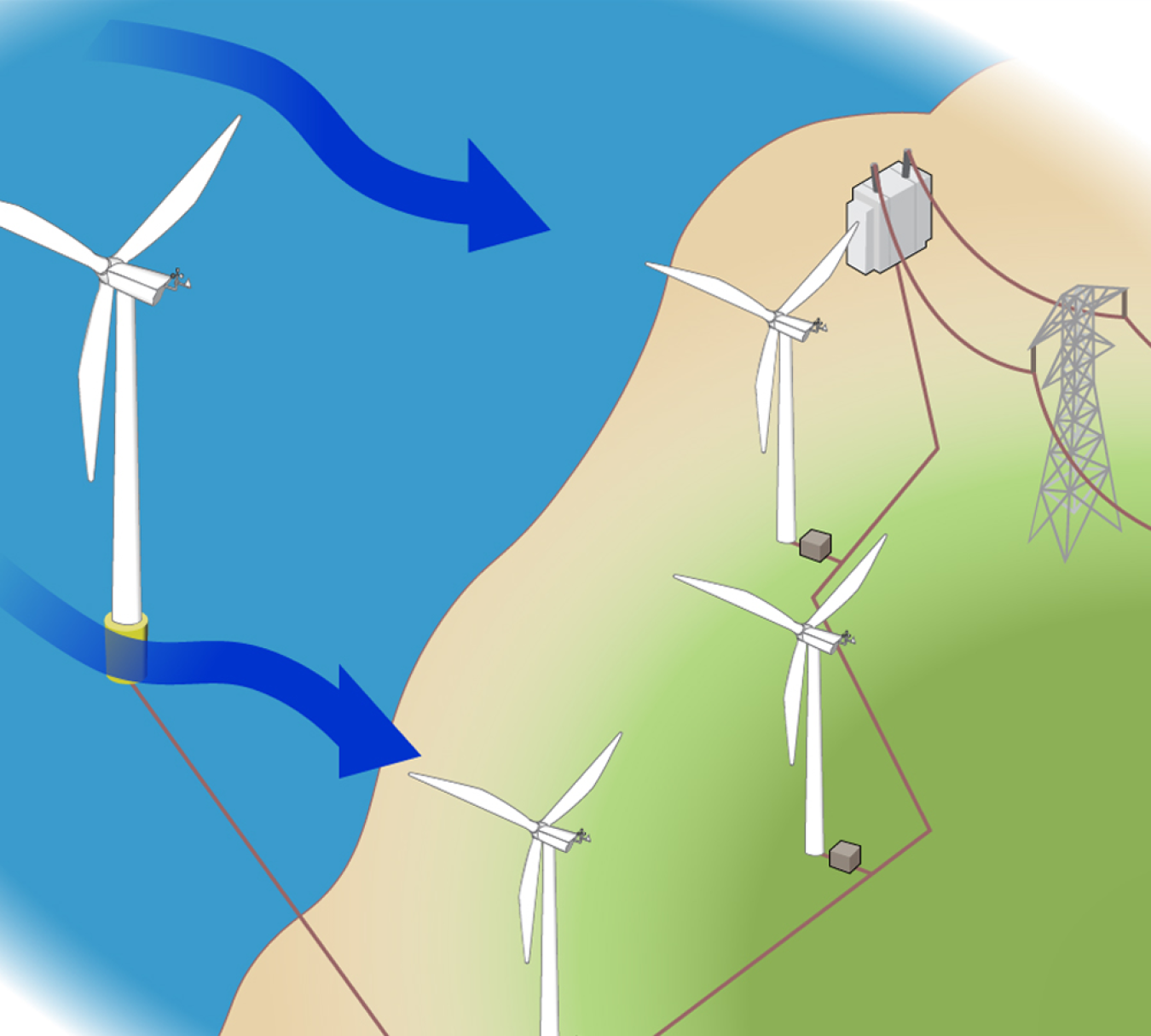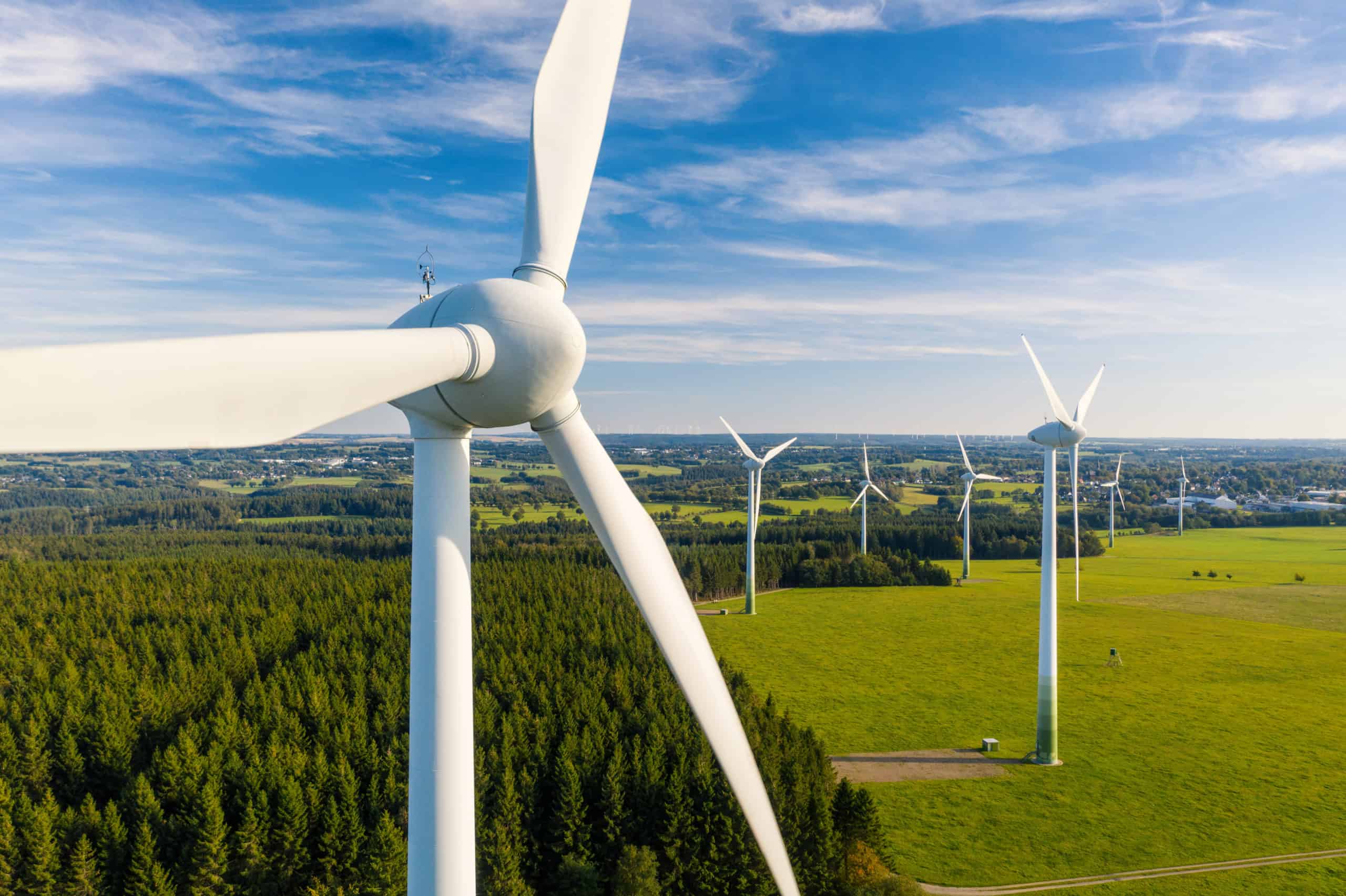Wind energy is harnessed to generate electricity through wind turbines. Wind energy is a renewable and clean source of electricity that is generated by harnessing the power of wind with the help of wind turbines.
As the wind blows, it turns the turbine’s blades, which in turn spin a generator to produce electricity. This process is known as wind power generation. The electricity produced can then be distributed and used to power homes, businesses, and even industries.
Wind energy is becoming increasingly popular due to its sustainability, as it produces no emissions or pollution during operation. In addition, the abundance of wind in many regions makes it a promising option for generating electricity and reducing reliance on fossil fuels.

Credit: www.energy.gov
Harnessing Wind Energy
Wind energy has emerged as a prominent source of renewable electricity production. Harnessing this powerful force of nature offers numerous sustainable benefits. Wind turbines play a pivotal role in converting the kinetic energy of wind into usable electrical energy. Understanding the mechanism of wind turbines is essential for comprehending the production of electricity from wind energy.
Wind Turbines
Wind turbines are large structures equipped with rotating blades that capture the energy from the wind. These blades are connected to a central hub, which is connected to a shaft. As the wind blows, it causes the blades to rotate. This rotational motion is then harnessed and transformed into electrical power.
Mechanism Of Wind Turbines
The mechanism of wind turbines involves a few distinct steps:
- The wind flow: As the wind blows, it exerts pressure on the surface of the turbine blades.
- Rotational Motion: This pressure causes the blades to rotate around the hub, converting the kinetic energy of the wind into mechanical energy.
- Shaft and Generator: The rotational motion of the blades is transferred to a shaft, which is connected to a generator. The generator uses this mechanical energy to produce electricity.
- Grid Integration: The generated electricity is then transmitted to the grid for distribution and eventual use by consumers.
Overall, wind turbines function as the backbone of wind energy production by capturing the energy of the wind and converting it into electricity. This environmentally friendly process ensures a sustainable and renewable source of power.
Wind Energy Efficiency
In the context of wind energy, efficiency refers to the ability of wind turbines to convert the kinetic energy of the wind into usable electricity. Maximizing efficiency is crucial for increasing the viability of wind energy as a sustainable power source. In this section, we will explore the factors influencing the efficiency of wind energy and the technological advances driving improvements in this vital aspect of renewable energy production.
Factors Affecting Efficiency
Several factors play a role in determining the efficiency of wind energy generation. The following elements influence the overall effectiveness of wind turbines in harnessing energy from the wind:
- Wind speed and consistency
- Turbine size and design
- Location and terrain
- Maintenance and operation
Technological Advances
Ongoing technological advancements are key drivers of enhanced wind energy efficiency. Innovations in turbine design, materials, and control systems have significantly boosted the performance and cost-effectiveness of wind power. Furthermore, the integration of smart grid technologies and advanced predictive modeling techniques has enabled more precise power generation forecasts and grid integration strategies, contributing to overall efficiency gains.
Benefits Of Wind Energy
Wind energy is a renewable and sustainable source of electricity that offers numerous benefits for both the environment and society. Let’s take a closer look at some of the key advantages of harnessing wind power.
Renewable And Sustainable
Wind energy is classified as a renewable and sustainable energy source because it uses the power of wind to generate electricity without depleting natural resources. Unlike non-renewable sources such as fossil fuels, the wind is a constant and free resource that will never run out. Harnessing wind power helps to reduce dependence on finite energy sources while promoting a more sustainable future.
Reduced Carbon Emissions
One of the most significant advantages of wind energy is its potential to reduce carbon emissions. Unlike traditional power sources like coal and natural gas, wind turbines do not produce greenhouse gases or other air pollutants during operation. By generating electricity from wind, we can contribute to mitigating climate change and improving air quality, thus creating a healthier and more sustainable environment for future generations.
In fact, a study conducted by the American Wind Energy Association (AWEA) found that the use of wind energy to generate electricity in the United States has resulted in a significant reduction in carbon dioxide emissions. Comparing the emissions from wind power to those from conventional power plants, it was found that wind energy has the potential to offset approximately 132 million metric tons of carbon dioxide annually.
Switching to wind energy helps to combat the adverse effects of global warming by drastically reducing the amount of greenhouse gases released into the atmosphere. By investing in wind power, we can actively participate in the transition to a low-carbon economy, working towards a more sustainable and cleaner future.

Credit: www.global.toshiba
Challenges In Wind Energy Production
Despite its promising potential as a clean and renewable source of electricity, wind energy production also poses a few challenges that need to be addressed. These challenges include intermittency and environmental impact. Let’s take a closer look at each of these challenges:
Intermittency
One of the primary challenges in wind energy production is its inherent intermittency. Wind is not constant and can vary in speed and direction, leading to fluctuations in electricity generation. This intermittency can pose issues in terms of grid stability and reliability. The intermittent nature of wind energy requires careful management and integration with other energy sources to ensure a consistent supply of electricity.
Environmental Impact
While wind energy is considered a clean source of electricity, its production does have some environmental impact to consider. One significant concern is the potential impact on wildlife, particularly birds and bats. Wind turbines can pose a risk to these species, especially during migration routes. However, significant efforts have been made to minimize this impact, including careful placement of turbines away from critical bird habitats and the development of technology to reduce bird collisions.
Another potential concern is the visual impact of wind farms on the surrounding landscape. Some people find wind turbines visually intrusive, and the development of wind energy projects must consider the scenic beauty and cultural significance of the areas in which they are located.
Despite these challenges, wind energy remains an essential component of the renewable energy mix and continues to grow in popularity as advancements in technology and research address these concerns. By understanding and managing the challenges associated with wind energy production, we can harness its vast potential in a sustainable and responsible manner.
Future Of Wind Energy
The sustainable potential of wind energy as a clean and renewable source has put the industry on a path towards exponential growth. With constant advancements in technology and increasing global focus on sustainable energy solutions, the future of wind energy holds great promises.
Offshore Wind Farms
Establishment of offshore wind farms is poised to be a game-changer in the wind energy sector. Offshore locations often provide stronger and more consistent winds, which can significantly boost electricity generation capacity. Furthermore, these farms have the potential to address the issue of space constraints associated with onshore projects, ensuring scalability and increased energy output.
Integration With Energy Grids
The integration of wind energy with existing energy grids is crucial for maximizing its potential. It involves developing advanced grid management systems to efficiently incorporate the intermittent nature of wind power. This integration allows for seamless distribution and utilization of wind-generated electricity, contributing to the overall stability and sustainability of the energy grid.

Credit: renown-electric.com
Conclusion
The potential of wind energy for electricity production is undeniable. Its renewable nature and minimal environmental impact make it a sustainable option for the future. Businesses and individuals can benefit from harnessing wind power, contributing to a cleaner and greener world for generations to come.








